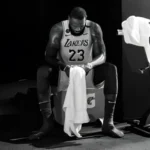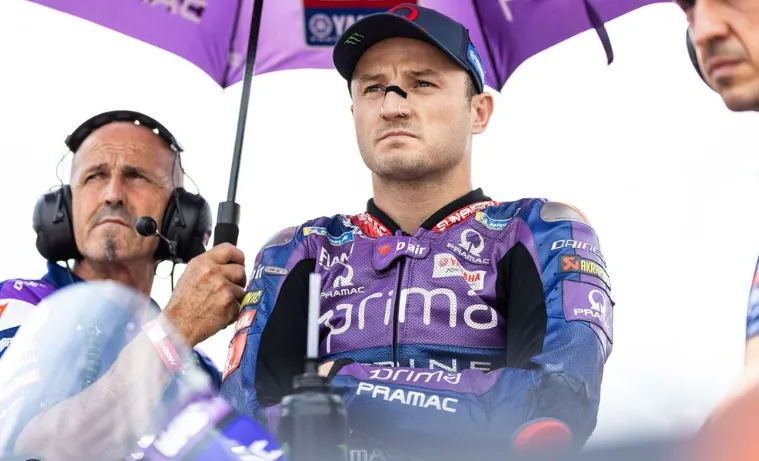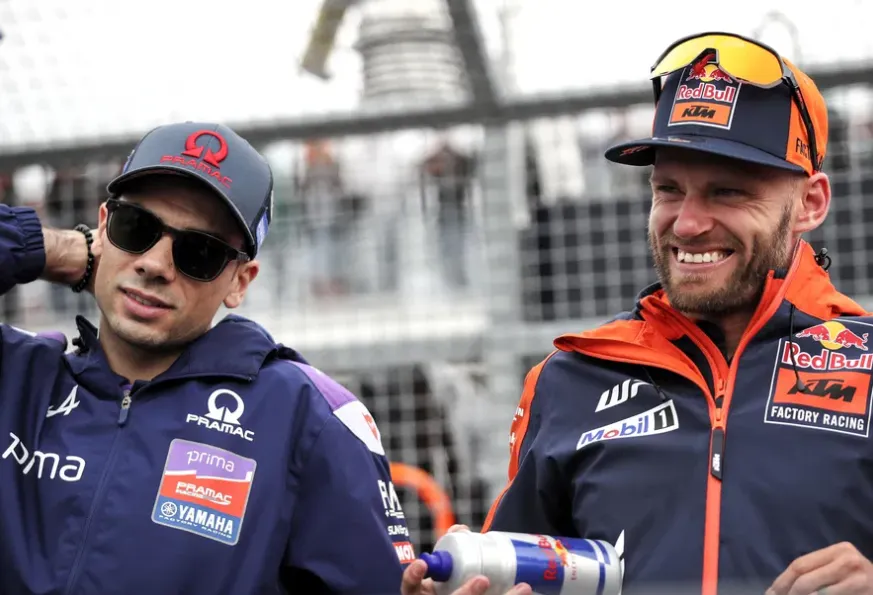
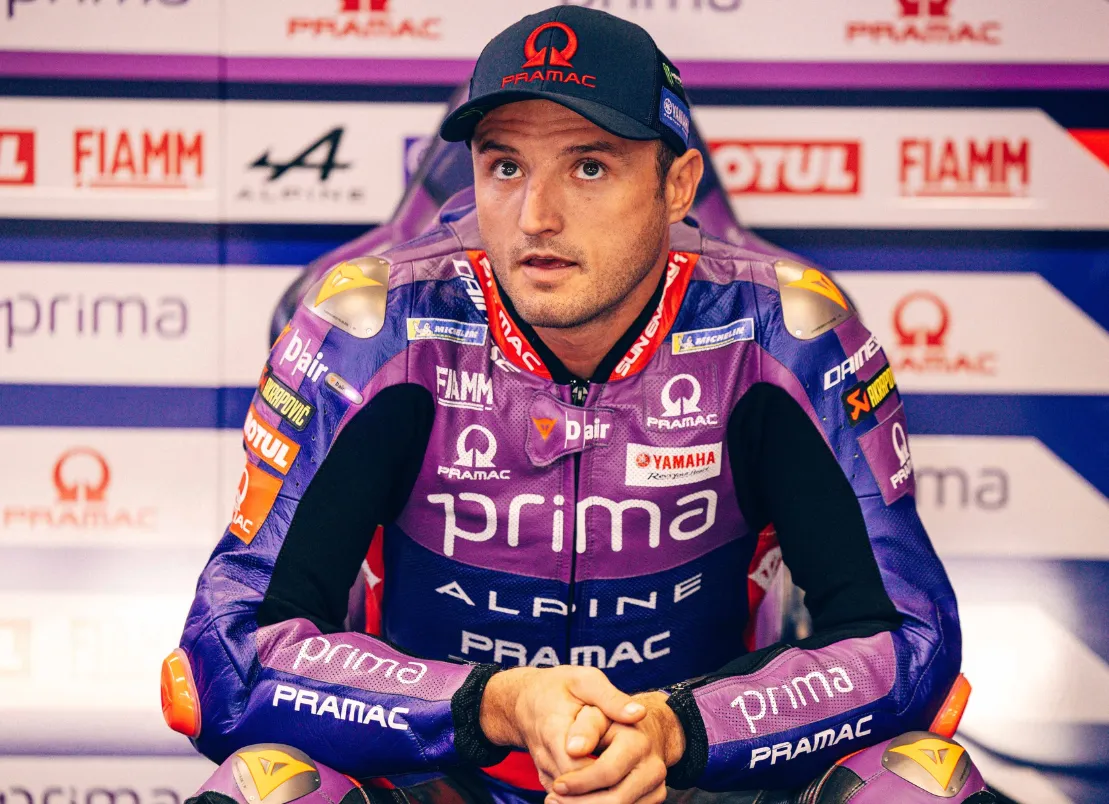
Jack Miller Battles Grip Woes to Salvage P15 in Barcelona MotoGP Practice
The opening day of the MotoGP Catalan Grand Prix was a tough one for Jack Miller, as the Australian rider found himself fighting low grip conditions and an early crash in practice. Despite the setbacks, Miller managed to regroup and salvage a 15th-place finish in Friday’s sessions at the Circuit de Barcelona-Catalunya. While the position on paper may not inspire confidence, the Pramac Yamaha rider believes there is more potential in the package and that overnight improvements could turn the weekend around.
Miller’s day got off to a rocky start, quite literally, with a crash at Turn 1 on only his third lap of the morning session. Though unhurt, the incident forced his crew into quick repair mode and left the team chasing valuable track time in a tightly packed practice schedule. Even so, Miller quickly returned to the circuit, determined to gather as much data as possible.
“It’s been quite a good day, even if on paper it might not look like it,” Miller said after practice. “In terms of pace and feeling, we’re not too far off. It was a rocky start when I went down at Turn 1 on lap three this morning, which wasn’t ideal, but we managed to bounce back.”
Barcelona’s Infamous Grip Challenge
The Circuit de Barcelona-Catalunya is widely regarded as one of the most challenging venues on the MotoGP calendar when it comes to grip levels. The combination of high-speed corners, long-radius turns, and an abrasive surface creates a layout that punishes rear tire life and exposes weaknesses in traction and drive—issues Miller and Yamaha have struggled with in the past.
“The bike feels okay—we clearly have some issues with drive, and the grip is basically non-existent,” Miller explained. “But we already know Barcelona is historically one of the worst tracks for grip, which is always our weak point.”
This admission highlights a recurring theme in Yamaha’s season. While the Japanese manufacturer has made strides in adapting to modern MotoGP demands, maintaining consistent rear grip on low-traction circuits has remained a difficult puzzle to solve. The Catalan layout, with its combination of heat and tire wear, tends to amplify those weaknesses.

Technical Analysis: What’s Holding Miller Back
Friday’s practice sessions showed Miller capable of putting together strong sector times, but the lack of drive off the corners left him vulnerable in critical acceleration zones. In modern MotoGP, where tenths of a second separate riders from direct Q2 advancement, small traction disadvantages can have a disproportionate impact on results.
Miller’s aggressive, late-braking style is designed to maximize corner entry speed and carry momentum through the turn. When the rear grip falls short, however, that same style risks destabilizing the bike mid-corner, compromising exit speed and increasing tire wear. This creates a vicious cycle where the rider must either push harder and risk crashes or back off and accept slower lap times.
The Pramac Yamaha crew will spend the evening poring over telemetry data, searching for solutions. The adjustments may include subtle changes to rear suspension preload, swingarm geometry, or torque delivery mapping—all aimed at improving tire contact and minimizing spin on corner exit.
Miller’s Mindset: Cautious Optimism
Despite finishing outside the top 10, Miller remains cautiously optimistic. His comments after practice reflected a veteran’s calm assessment of the situation rather than frustration.
“We’ll rack our brains tonight, try some different set-up ideas and see. I don’t think we’re too far away—we just need to improve the package,” Miller said. This measured approach suggests that both he and the team have a clear understanding of their weaknesses and a roadmap for addressing them before Saturday’s crucial qualifying sessions.
In MotoGP, where grids are often separated by fractions of a second, small setup changes can transform a bike’s competitiveness overnight. If Yamaha can unlock better rear grip, Miller has the racecraft and aggression to capitalize on any improvement, particularly in a race scenario where tire management often becomes as important as outright speed.
The Bigger Picture for Pramac
Pramac Yamaha entered the 2025 season with high expectations. After taking on a new role as Yamaha’s primary satellite outfit, the team has been balancing development duties with competitive goals. Miller’s arrival brought both experience and a fresh perspective, crucial as Yamaha transitions toward its next-generation V4-powered M1.
The team’s mission is twofold: deliver strong results in the present while feeding development data to Yamaha’s factory squad. Weekends like Barcelona test both areas, highlighting where upgrades are required and how quickly progress can be made.
For Miller, who moved to Pramac to spearhead the Yamaha effort alongside Miguel Oliveira, weekends like this are crucial for providing feedback. Every lap completed, even outside the top ten, provides engineers with actionable data for both short-term fixes and long-term improvements. In the highly competitive MotoGP arms race, identifying a problem is only half the battle; solving it quickly and consistently is what separates title contenders from the midfield.
Saturday Qualifying Will Be Critical
Miller’s P15 finish in practice leaves him at risk of having to fight through Q1 to reach the final qualifying shootout. In MotoGP’s current format, direct access to Q2 (the top ten from combined practice times) is often decisive, as the extra track time and better tire allocation can make a difference in race preparation.
Failing to reach Q2 means starting further back on the grid, forcing riders to burn tires and energy battling through traffic—a risky prospect on a track where tire degradation is already severe.
Still, Miller has built a career on making the most out of challenging circumstances. His aggressive starts, bold overtakes, and ability to find pace under pressure have earned him podiums in less-than-ideal situations before. If Pramac can provide even a small step forward in rear grip, qualifying could yet produce a grid position that keeps him in the hunt for a strong race finish.
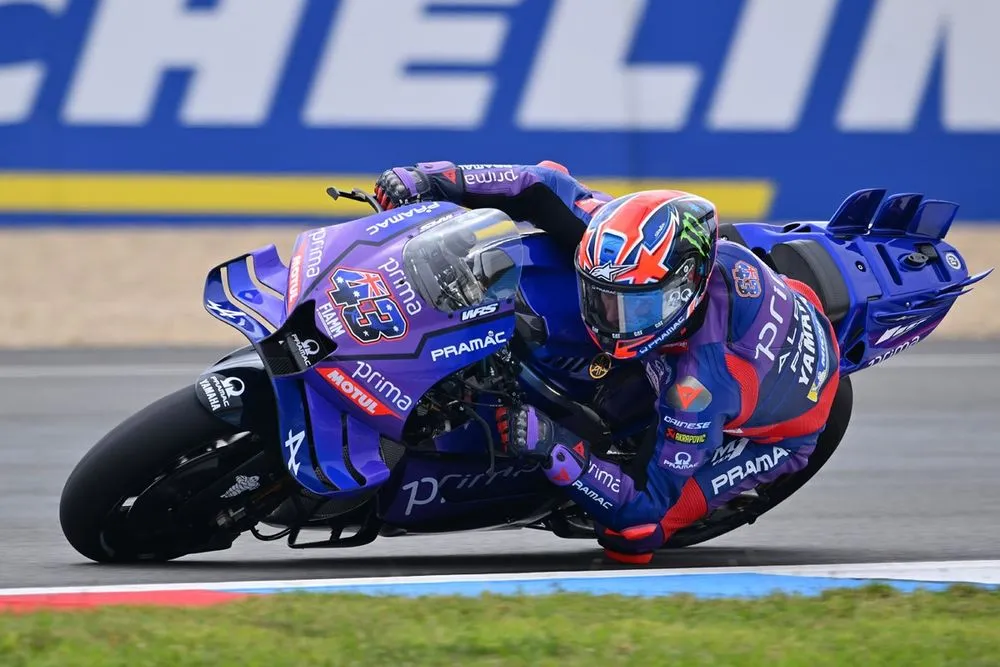
A Veteran’s Perspective in a Crucial Phase
Miller’s value to Pramac goes beyond lap times. As a rider with years of MotoGP experience, including time on Honda and Ducati machinery, he brings a comparative understanding of what works across different bike philosophies. This perspective is invaluable as Pramac helps Yamaha refine its evolving M1 into a race-winning package across all track types.
His ability to stay level-headed during difficult weekends helps stabilize the team and keeps development on track. Rather than panicking over a single rough practice day, Miller frames it as part of the broader process of improving a still-evolving MotoGP machine.
Conclusion: Setbacks, Solutions, and Second Chances
Jack Miller’s Friday at the Catalan Grand Prix was defined by grip struggles, a morning crash, and a 15th-place finish that belied the underlying progress made throughout the day. While the official classification paints a picture of difficulty, Miller’s feedback and Pramac Yamaha’s responsiveness suggest that there is more potential to unlock as the weekend progresses.
Barcelona’s notoriously low grip continues to challenge the Yamaha package, but with overnight data analysis and strategic setup adjustments, Miller could yet convert Friday’s frustrations into a competitive Saturday. In MotoGP, fortunes can change in the blink of an eye, and Miller has built his reputation on resilience and adaptability.
Saturday’s qualifying session will reveal whether Pramac has found the answers it needs—and whether Jack Miller can once again turn adversity into opportunity on one of MotoGP’s trickiest stages.






